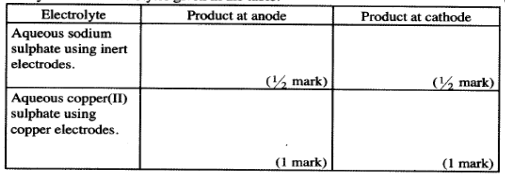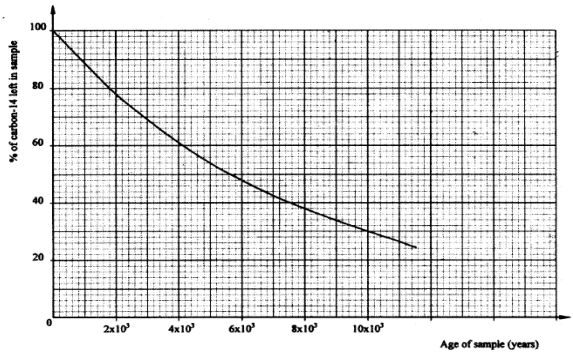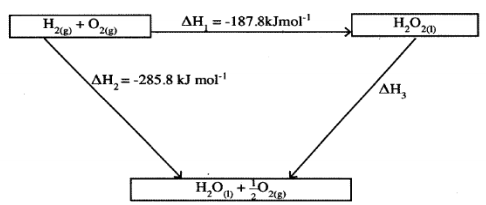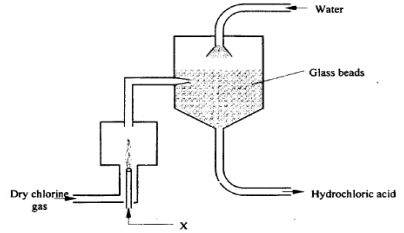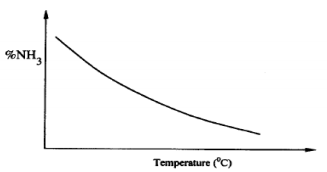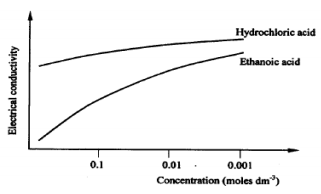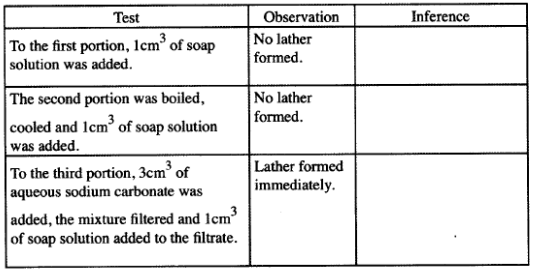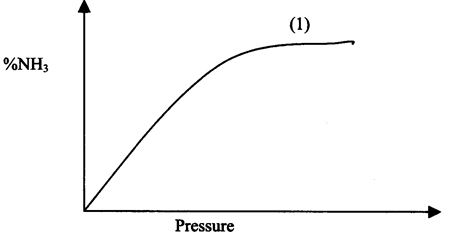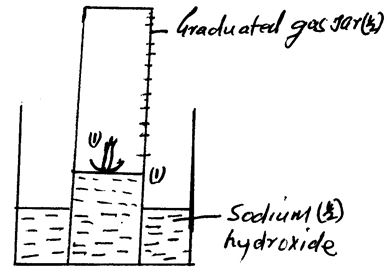- Distinguish between a deliquescent and a hygroscopic substance. (2 marks)
- Give one use of hygroscopic substances in the laboratory. (1 mark)
- What is meant by the following terms: (2 marks)
- Element;
- Atomic number
- The formula for a chloride of titanium is TiCl3. What is the formula of its sulphate? (1 mark)
- What is meant by the following terms: (2 marks)
- What is the name given to each of the following:
- Ability of a metal to be made into a wire; (1 mark)
- Minimum energy required for a chemical reaction to start; (1 mark)
- Type of force that holds atoms of neon together? (1 mark)
- Draw the structures and give the names of three alkanes having molecular formula C5H10. (3 marks)
- Hydrated cobalt (II) chloride exists as pink crystals and anhydrous cobalt (II) chloride is a blue powder. Describe a laboratory experiment that can be used to show that the action of the heat on the hydrated cobalt (II) chloride is a reversible reaction. (3 marks)
- Aluminium oxide reacts with both acids and bases.
- Write an equation for the reaction between aluminium oxide and hydrochloric acid. (1 mark)
- Using the equation in (a) above, calculate the number of moles of hydrochloric acid that would react completely with 153.0 g 0f aluminum oxide. (Al = 27.0, O = 16.0). (2 marks)
- Complete the table below by writing the products formed at the electrodes during the electrolysis of the electrolytes given in the table.
- The pressure of nitrogen gas contained in a 1 dm3 cylinder at -1960C was 101 Pascals.
Calculate the:- Volume of the gas at 250C and 105 Pascals; (1 1/2 marks)
- Mass of nitrogen gas (Molar volume of gas is 24dm3, N = 14.0). (1 1/2 marks)
- Carbon -14, 146C, is used in carbon dating. It decays to form nitrogen, 147N. The graph below shows the amount of carbon -14 left in a sample against its age in years.
- Write a nuclear reaction for the decay process of carbon – 14. (1 mark)
- From the graph, determine the:
- Half-life of carbon – 14; (1 mark)
- Percentage of carbon -14 in a sample whose age is 1950 years. (1 mark)
- The figure below shows an energy cycle.
- Give the name of enthalpy change ΔH1. (1 mark)
- Determine the value of ΔH3. (2 marks)
- Hydrogen sulphide is highly toxic and flammable gas. It is normally prepared in a fume chamber.
- Name two reagents that can be use to prepare hydrogen sulphide in the laboratory. (1 mark)
- One of the uses of hydrogen sulphide is to produce sulphur as shown in the following equation.
2H2S(g) + SO2(g) -------> 3S(s) + 2H2O(l)
Identify the reducing agent in this reaction and give a reason for your answer. (1 mark) - Other than production of sulphuic (VI) acid, name one commercial use of sulphur. (1 mark)
- A beaker contained 75.0cm3 of aqueous copper (II) sulphate at 23.70C. When scrap iron metal was added to the solution, the temperature rose to 29.30C.
- Write an ionic equation for the reaction that took place. (1 mark)
- Given that the mass of copper deposited was 5.83g, calculate the molar enthalpy change in kJmol-1. (Specific heat capacity of solution = 4.2Jg-1K-1, density of solution = 1.0gcm-3 , Cu = 63.5) (2 marks)
- Some animal and vegetable oils were used to make margarine and soap.
Give the reagents and conditions necessary for converting the oil into:- Margarine; (2 marks)
- Soap. (1 mark)
- Using electrons in the outermost energy levels, draw the dot (.) and the cross (x) diagrams for the molecules H2O and C2H4. (H = 1, C= 6, O = 8). (2 marks)
- H2O
- C2H4
- The formula of complex ion is Zn(NH3)2+4. Name the type of bond that is likely to exist between zinc and ammonia in the complex ion. (1 mark)
- Using electrons in the outermost energy levels, draw the dot (.) and the cross (x) diagrams for the molecules H2O and C2H4. (H = 1, C= 6, O = 8). (2 marks)
- Carbon (II) oxide is referred to as the “silent killer”.
- State one physical property of carbon (II) oxide that makes it a “silent killer”. (1 mark)
- State and explain one chemical property that makes carbon (II) oxide poisonous to human beings. (2 marks)
- A sample of fertilizer is suspected to be calcium ammonium nitrate. Describe chemical tests for each of the following ions in the sample.
- Calcium ions; (2 marks)
- Ammonium ions. (1 mark)
- Analysis of a compound showed that it had the following composition: 69.42% carbon, 4.13% hydrogen and the rest oxygen.
- Determine the empirical formula of the compound. (C = 12.0, H = 1.0, O = 16) (2 marks)
- If the mass of one mole of the compound is 242, determine its molecular formula. (1 mark)
- The diagram below represents a set up for large scale manufacture of hydrochloric acid. Study it and answer the questions that follow.
- Name the substance X. (1 mark)
- What is the purpose of the glass beads? (1 mark)
- Give two uses of hydrochloric acid. (1 mark)
- The half equations involved in a cell are:
- Write the overall equation for the electrochemical cell. (1 mark)
- Calculate the e.m.f generated by the battery consisting of the ten cells. (1 mark)
- State one environmental advantage of using these cells in spacecrafts. (1 mark)
- In an experiment to prepare nitrogen (I) oxide, ammonium nitrate was gently heated in a flask.
- Write an equation for the reaction that took place in the flask. (1 mark)
- State and explain how the gas was collected. (1 mark)
- A sample of gas was tested with damp blue and red litmus papers. What observations were made? (1 mark)
- The use of CFCs has been linked to depletion of the ozone layer.
- What does CFC stand for? (1 mark)
- Explain the problem associated with depletion of the ozone layer. (1 mark)
- State one environmental problems caused by CFCs. (1 mark)
- Nitrogen and hydrogen react to form ammonia gas as shown in the following equation:
N2(g) + 3H2(g) ---------><------- 2NH3(g): is negative- The figure below shows the percentage of ammonia gas in the equilibrium mixture changes with temperature.
Explain why the percentage of ammonia gas changes as shown in the figure. (2 marks) - On the axes below, sketch a graph showing how the percentage of ammonia gas in the equilibrium mixture changes with pressure. (1 mark)
- The figure below shows the percentage of ammonia gas in the equilibrium mixture changes with temperature.
- The curves below shows how the electrical conductivity of hydrochloric and ethanoic acids vary with concentration.
Explain why the electrical conductivity of 0.01M hydrochloric acid is higher than thet of 0.01M of ethanoic acid. (2 marks) - Describe how a solid sample of double salt, ammonium iron (II) sulphate, can be prepared using the following reagents: aqueous ammonia, sulphuic (VI) acid and iron metal. (3 marks)
- A sample of river water was divided into three portions. The following table shows the tests carried out on the portions and the observations made.
Complete the table by filling in the inferences. (3 marks) - A water tough, aqueous sodium hydroxide, burning candle, watch class and a graduated gas jar were used in the experimental set up to determine the percentage of the active part of air. Draw a labeled diagram of the set up at the end of the experiment. (3 marks)
- The atomic number of phosphorus, sulphur and potassium are 15, 16 and 19 respectively. The formulae of their ions are P3-, S2- and K+. These ions have the same number of electrons.
- Write the electron arrangement of the ions. (1 mark)
- Arrange the ions in the order of increasing ionic radius starting with the smallest. Give a reason for the order. (2 marks)

MARKING SCHEME
-
- Deliquescent - a substance that absorbs water from the atmosphere and changes into a solution. (1)
- Hygroscopic - a substance that absorbs water from the atmosphere but just becomes wet. (1)
-
-
- Element - Substance that consists of one type of atoms (1)
- Atomic Number - Number of protons in an atom (1)
- Ti3(SO4)2 (1)
-
-
- Ductility. (1)
- Activation Energy (1)
- Vander Waals Force (1)
-
- Heat the hydrated salt in a sealed container (1). The pink substance changes to blue (½). Allow the pink substance to cool (1) it changes to a pink substance (½)
-
- Al2O3(s) + 6HCl(aq) → 2AlCl3(aq) + 3H2O (1)
- Al2O3 = 2(27) + 3(16) = 102
Moles of Al2O3 = 153
102
Moles of HCl = 152 x 6 (½) = 9 Moles (½)
102
Electrolyte Anode Cathode Aqueous sodium sulphate using (½) insert electrodes Oxygen Hydrogen (½) Copper (II) Sulphate using copper electrode Copper ions (1) Copper metal (1) -
- Enthalpy of formation of hydrogen peroxide(1)
-
-
- Iron(II) Sulphide
- Hydrochloric Acid (1)
-
- Reducing agent, hydrogen sulphide (½)
- The sulphur changes from −2 to zero (½)
-
- Vulcanisation of rubber (1)
- Manufacture of sulphur drugs
-
-
- Cu2+(aq) + Fe(s) → Cu(s) + Fe2+(aq)
- ΔH = MCΔT
= 75.0 x 4.2 x 5.6
= - 1746J
Moles of Cu = 5.83 = 0.0918
63.5
ΔH/mol = 1764/ 0.0918
= -19215.7J
= -19.2KJ mol
-
-
- Reagents - Hydrogen 1
- Conditions
High temperature
High pressure
Nickel catalyst
- Soap = Sodium hydroxide
condition - heating
-
-
- Dative covalent bond
-
- gas has no colour and smell
- Carbon (II) oxide has high affinity for iron in the haemoglobin in the blood, or displaces oxygen from haemoglobin, (1) the body tissues are deprived of oxygen (1)
-
-
- Add a few drops of NaOH to an aqueous solution of the fertilizer. Forms white ppt insoluble in excess (1)
- Add a few drops of aqueous sulphuric (VI) acid to another portion of aqueous solution of fertilizer. Froms a white ppt insoluble in excess (1)
-
- Heat the sample fertilizer in a test tube, and test gas evolved with damp red litmus paper, turn blue (1)
- Or add NaOH to the sample fertilizer and heat the mixture; test gas evolved using damp red litmus paper, turn blue.
-
-
-
C H O % 69.42 4.13 26.45 69.42 = 5.785
124.13 = 4.13
126.45 = 1.63
16Simplification 5.785 = 3.5
1.6534.13 = 2.5
1.6531.653 = 1
1.653Whole no. 7 5 2 Empirical formula C7H5O2 - Empirical mass :
7(12) + 5(1) + 2 (16) = 121
(C7H5O2)n = 242
(121)n = 242
n = 242 = 2
121
Molecular formula is C14H10O4
-
-
- X = H2 gas
- Increase surface area for faster reaction
- Pickling of metals
-
- 2H2 + O2 ⇌ 2H2O
- e.m.f = 0.40- -0.83 = 1.23V per cell.
For ten cells = 10 x 1.23 = 12.3V - Water formed can be used
Water is no a pollutant
-
- NH4NO3(s) → N2O(g) + 2H2O(g)
- Downward displacement of warm water because it is fairly soluble in cold water (1)
- Both red and blue litmus will not change colour (1)
-
- Chloroflourocarbon(1)
- When ozone id depleted, high energy UV radiations reach the earth, which may cause skin cncer to human beings (1)
- Global warming (1), green house effect.
-
- Forward reaction is exothermic, (1) therefore increase in ntemperature shifts position of equilibrium to the left direction in (1) which heat is absorbed.
-
- Hydrochloric acid is strong acid which is fully ionised in water(1) while ethanoic acid is a weak acid, partially ionised in water (1)
-
- React ion metal with sulphuric acid to form Iron (II) sulphate
- Reacty aqueous ammonia with sulphuric acid to form Ammonium Sulphate
- Mix the two solutions iron (II) sulphate and ammonium sulphate to form a solution of ammonium iron (II) sulphate evaporate, until crystallization stars then filter.
- Inference
- 1st portion water hard
- 2nd portion permanent hardness of water
- 3rd portion Na2CO3 removed the hardness
-
-
- 2.8.8
- K+ < S2- < P3-
Potassium has 19 protons attracting 18 electrons sulphur has 16 protons attracting 18 electrons and phosphorous has 15 protons 18 electrons.
Therefore the electrons in potassium ions are attracted more strongly making it the smallest ion.
Join our whatsapp group for latest updates
Tap Here to Download for 50/-
Get on WhatsApp for 50/-
Download KCSE 2010 Chemistry Paper 1 Questions with Marking Scheme.
Tap Here to Download for 50/-
Get on WhatsApp for 50/-
Why download?
- ✔ To read offline at any time.
- ✔ To Print at your convenience
- ✔ Share Easily with Friends / Students

